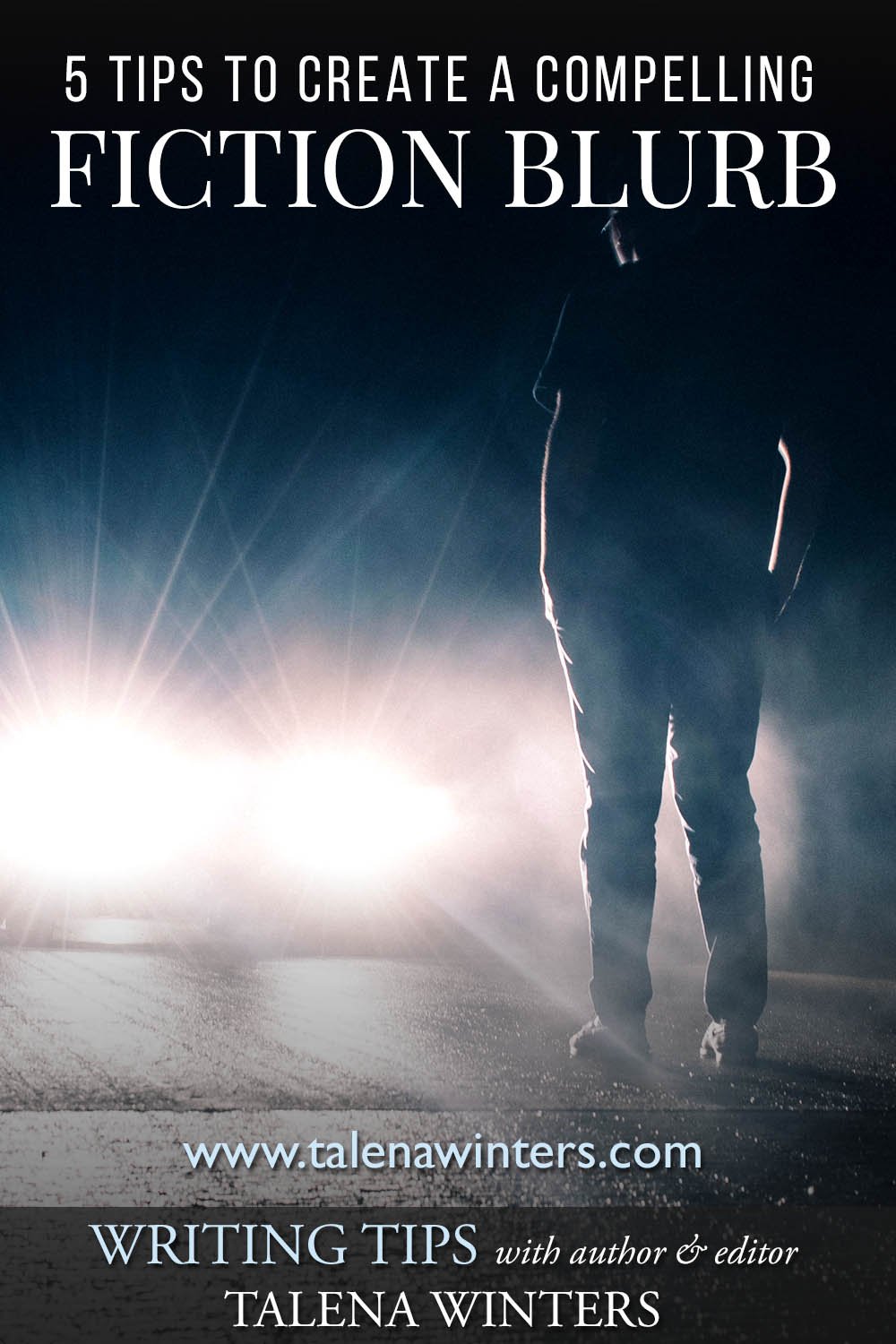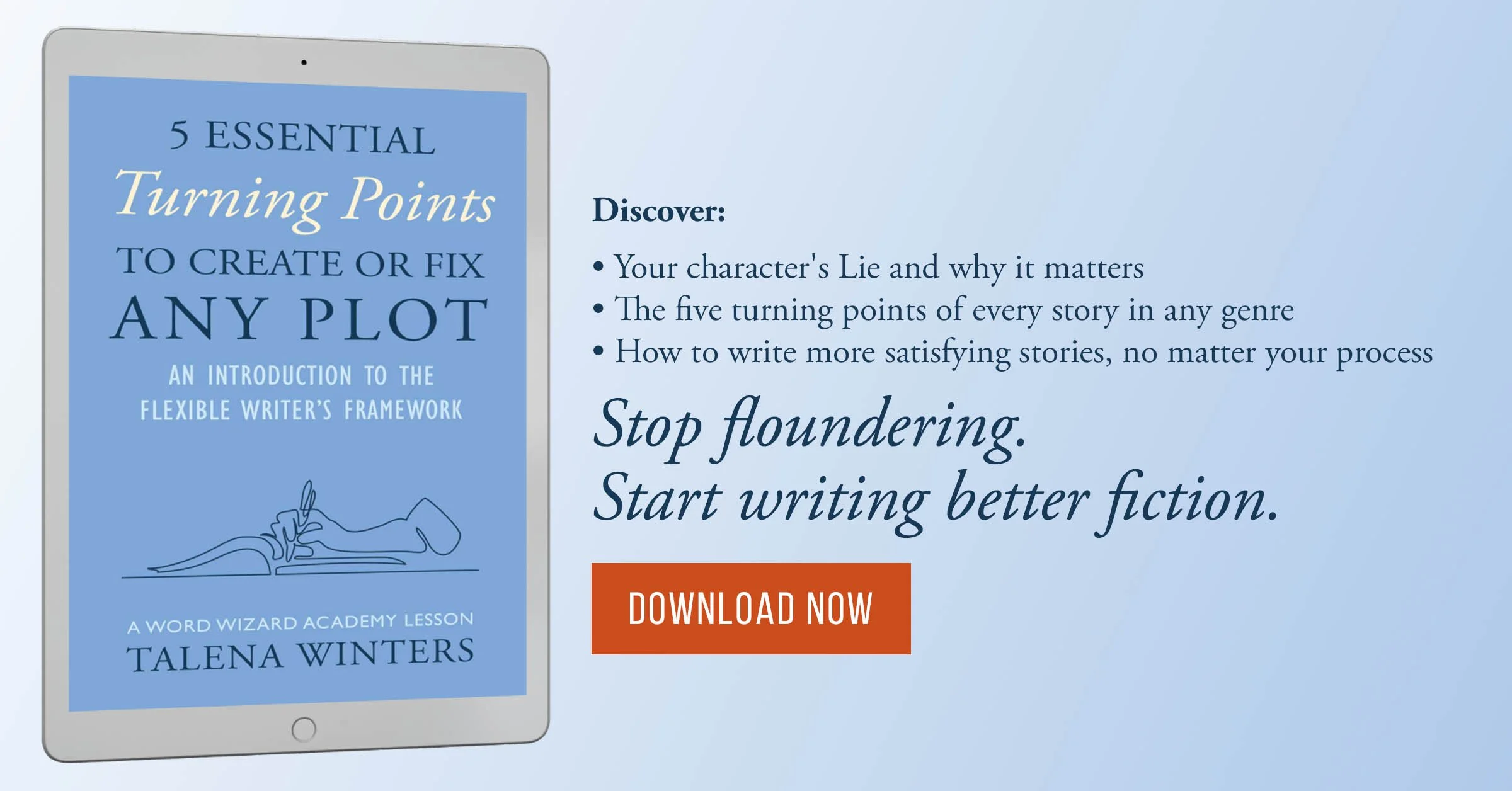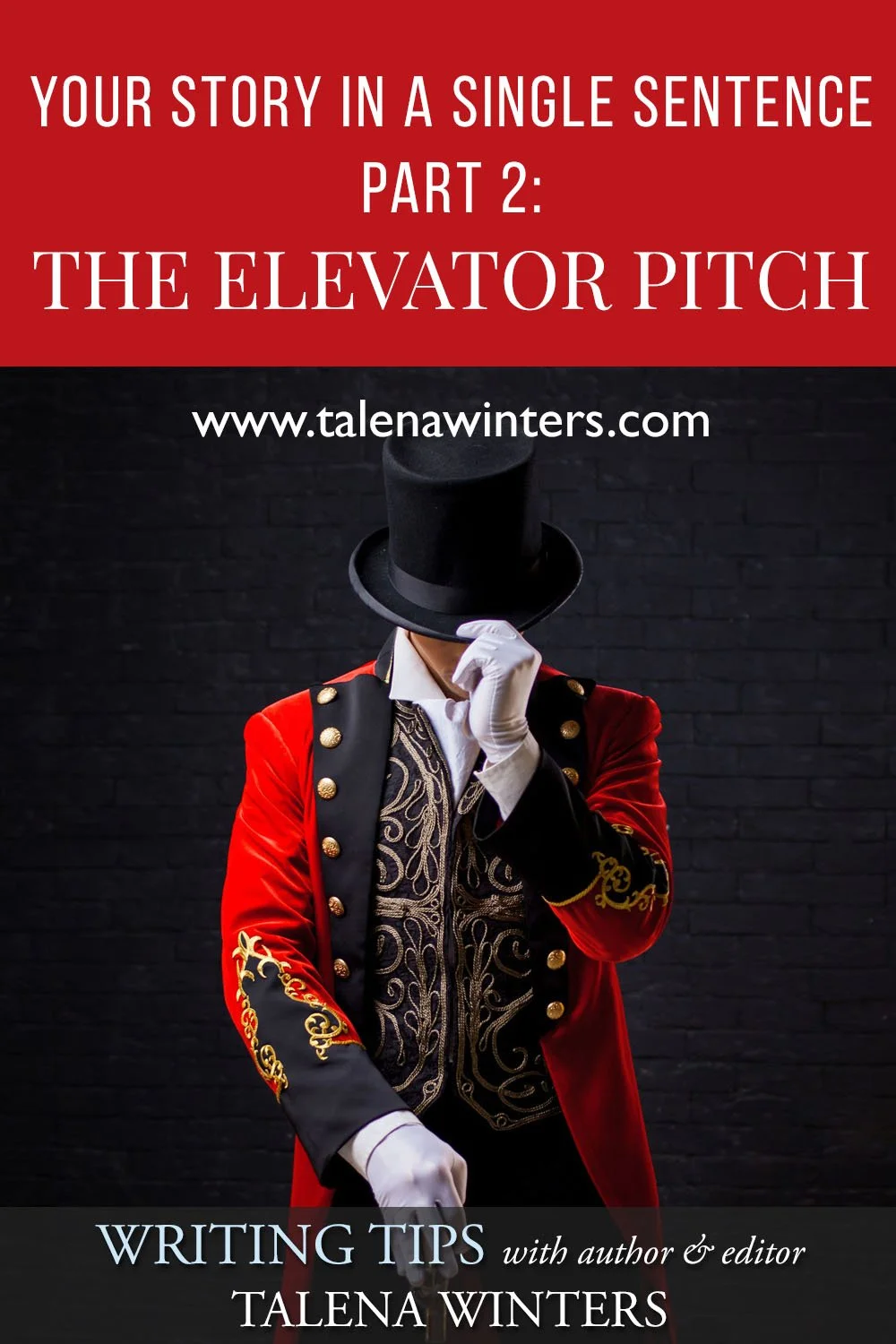5 Tips to Create a Compelling Fiction Blurb
After an amazing cover, the best tool you have to help a customer make the choice to purchase your book is to have a fantastic book description (often called “blurbs”, whether that’s completely accurate or not). Well-written blurbs pull customers in and make them agitate to get that book into their bag or their eReader so they can crack open the first page. (Or maybe flip open the book for a little preview of your writing—but at least they’ve taken the next step!)
So, given how important the blurb is, no wonder many authors stress so much about making it perfect.
Or perhaps the stress is because, as much as you may know what your book is about, condensing it into three hundred words or less seems like a task too herculean for even Hercules.
Never fear! By breaking down the elements of blurbs that consistently sell books, you, too, can create a compelling blurb. And the good news is, it’s not as hard as you think, and might even help you make your book better.
Intrigued? Read on!
The Purpose of the Blurb
Before we dive in to the five points, I want to make sure we are all really clear on what we are trying to accomplish with our book blurb. It all boils down to a single sentence:
The purpose of a book blurb is to create an appropriate reader expectation of the book, as well as to make the reader want to find out more (i.e. create questions in the reader’s mind). In other words, to sell the book.
In case it isn’t obvious from that statement, your blurb, like your cover and your elevator pitch, is a marketing tool. And that means we need to remember one very important guiding principal:
KEEP IT SIMPLE, SWEETIE!
While writing your blurb, keep the K.I.S.S. formula in mind: Keep It Simple, Sweetie!
“The purpose of a book blurb is to create an appropriate reader expectation of the book, as well as make the reader want to find out more (i.e. create questions in the reader’s mind).”
Which brings us to point number one.
1. Less is More
While I definitely recommend you avoid overused cliches like “less is more” in your actual blurb, it’s important to remember that we are not trying to cram every element of our plot into our back cover copy. Like the elevator pitch, we need to focus on what is most essential and intriguing. It’s not a plot synopsis, it’s an invitation to learn more.
We want our readers to have questions after reading it—questions that will make them dive between your pages to find the answers.
We’ll continue to build on this theme throughout this post, but here are some general guidelines to keep in mind as you build your blurb:
Don’t use too many names, whether of places or people. The more names, the more confusing the blurb becomes. The only characters named on a book blurb should be your primary two or three players. Everyone else can be described. And by “everyone else,” I mean your antagonist or side character. Try to keep the total number of characters in the blurb no higher than five.
Don’t include too many plot threads in your blurb. While this might be easy in a romance that usually focuses on only one or two POV characters, it can be trickier in an epic fantasy or thriller where multiple players are affecting the outcome of the plot. Focus on the primary two (maybe three, but do so carefully) elements that are driving your plot, and the characters that affect them the most. (In fact, even in multi-POV descriptions, creating a blurb in a single POV of the primary character is a best practice.)
Try to sum up your entire plot in no more than three paragraphs—but less is more. You can tack on an extra short paragraph to mention themes or genre as your selling paragraph, but in your body text, two or three paragraphs is best. More about that in the next point.
Quick guidelines:
Try to make your blurb include no more than:
two plot arcs
three character names (though only two is better)
three (or four) short paragraphs including your selling paragraph (Two paragraphs plus a hook and a selling paragraph is plenty for most blurbs, unless it’s a two-POV blurb, then add one paragraph.)
five characters (but three, tops, is better!)
Your blurb should reveal only enough to create compelling questions which your reader must read the book to find the answers to—and no more.
“We want our readers to have questions after reading it—questions that will make them dive between your pages to find the answers.”
2. Lead with a hook
Whether it’s on your back cover or on an Amazon description, the top line of your blurb should be intriguing enough to make your readers want to read on. This lead or tag line will usually be formatted differently than what follows, say in bold or italics or both, to grab the eye. It is also often what you will use on posters, memes, flyers, ads, tweets, etc., to quickly grab a reader in the least amount of possible characters and make them want to find out more.
While there are several ways to format this, all of which work, the important thing is that you actually include your utmost primary conflict and stakes right in this line somehow. In other words, the lead is the most simplified version of your plot you can possibly have.
Here are some good ways to format leads:
Ask a question. Or three.
“How far would you go for revenge if someone killed your father? If someone destroyed your city? If everything you ever loved was taken from you?” - The Reckoners series by Brandon Sanderson (This would have been fine with only the first question, actually. Using three is overkill, in my opinion.)
“What happens when the most beautiful girl in the world marries the handsomest prince of all time and he turns out to be...well...a lot less than the man of her dreams?” The Princess Bride by William Goldman (Note: On my edition from the early 90s, the last part of this line is actually “… and he turns out to be a son of a b*tch?” They probably changed it because of the mild profanity, but given that William Goldman’s lengthy author-voice intrusions in the story are aimed at an older YA to adult audience that would typically use this type of language, I’m not sure that was a great idea.)
Include three short sentences that introduce your conflicts or main plot elements.
“For both Zane and Darby, their small town roots hold a terrible secret. Now, decades later, they've come together to build a new life. But will the past set them free or pull them under?” - Under Currents: A Novel by Nora Roberts
“Epic Fantasy. Magic. Love.” - City of Blaze by H.O. Charles
Include a line in the main character’s voice that sums up the conflict.
“I won’t describe what I look like. Whatever you’re thinking, it’s probably worse.” - Wonder by R.J. Palacio
“Three flying birds ... one for each member of the family I left behind.” - Divergent by Veronica Roth
Make a short dramatic statement.
“Playing God has consequences.” - The Immortal Gene by Jonas Saul
“Her husband is missing.” - When You Find Me by P. J. Vernon
“In the year 2044, reality is an ugly place.” - Ready Player One by Ernest Cline
Make a longer intriguing statement.
“For love of country, for love of maiden, for love of freedom ... he became the hammer and scourge of England.” - Braveheart by Randall Wallace (Note: This ellipsis is unneeded and a little confusing here. Don’t put in an ellipsis just because it’s the hook. There needs to be a reason.)
“The story of how a boy who believed in the goodness of human nature set out to change the world.” Pay it Forward by Catherine Ryan Hyde
Use a trailing lead…
“Nothing is as it seems …” The Last Nazi by Andrew Turpin
Use a sentence that includes your themes, genre, stakes, “cool factor,” and/or validation/credentials.
“From the pages of history and accounts of those who endured the Battle of Franklin, Tamera Alexander weaves real-life love letters into a story of unlikely romance first kindled amid the shadows of the Civil War.” - With this Pledge by Tamera Alexander
“From award-winning German author Michael Ende, The Neverending Story is a classic tale of one boy and the book that magically comes to life.” - The Neverending Story by Michael Ende
I have seen combinations of these, but in general, I think this makes them too complicated and confuses the issue. Remember, less is more!
Quick guidelines: Use the lead to catch a reader’s eye and intrigue them enough to read more, but remember the KISS formula. The lead is to hook them. Put the rest in the blurb copy.
“The lead is the most simplified version of your plot that you can possibly have.”
3. Turn your Elevator Pitch into Blurb Copy
I’ve already mentioned your elevator pitch a couple of times in this post, and that’s because your blurb contains almost the exact same elements as your elevator pitch, except you expand on them.
Your elevator pitch is created using a log line, which is a single sentence that encapsulates your primary characters, conflicts, and stakes, and transforms that sentence into something that draws people in. The pitch can also include themes, genre, or comparisons with other books that are similar. (For more on how to create an elevator pitch, please click here.)
For a blurb, you include these same elements with the same angle of revealing a mystery that must be solved. These are, after all, what your story is about. But don’t give away the ending in the blurb (or the elevator pitch)!
Since your elevator pitch is made from your log line, it should already contain your primary conflicts: Protagonist with a need plus antagonist with a need plus stakes, and you likely also have your twist and a ticking clock in there.
Use these same elements as a rough outline but expand on each slightly. Give each main protagonist a single paragraph (up to two protagonists) that includes their needs or main problem. You can also include their stakes, twist, and ticking clock in those same paragraphs, or you could possibly add a third paragraph to do so.
Then you can add one more short paragraph (one sentence only) that talks about theme, genre, comps, or the “cool factor”, or maybe a combination of a couple of these. Don’t try to include them all! Alternatively, include this information in the lead, as mentioned above.
Remember, your purpose is to give an appropriate reader expectation and make them want to find out more—and no more.
For instance, in the first book of my young adult science fantasy trilogy, The Undine’s Tear, I wanted to make sure potential readers knew that the story involved mature themes (so may not be appropriate for the younger end of the YA age range) and dragons and sphinxes as well as mermaids as far as fantasy creatures are concerned to have a wider appeal, so I added a sentence that included these elements.
In my blurb for the romantic suspense Finding Heaven, I added a final paragraph to make it clear the protagonist was dealing with issues from an abusive past but that it focuses on the healing aspects of her journey. It is my way of warning those who might be triggered by reading a story including these elements so no one is surprised.
Do genre research to see how other attention-grabbing blurbs in your genre are structured, how many paragraphs they use, and which elements from the elevator pitch they include and how. And remember, we’re only trying to set expectations and create interest. So keep it as simple as possible—but not too simple. :-)
Quick Guidelines: Start with your log line or elevator pitch. Expand on it just enough to tantalize your reader into asking more questions.
“Remember, your purpose is to give an appropriate reader expectation and make them want to find out more—and no more.”
4. Use the Right Tense, POV, and Tone
There are few hard and fast rules when it comes to writing blurbs, but here’s one: always use present tense.
Okay, it’s still not hard and fast. But it’s definitely a best practice.
We want our readers to feel like these conflicts and stakes are immediate and urgent, and there is no better way to do that than in the present tense. If it is past tense, then the danger is past. There is no urgency.
That’s not to say some of your sentences won’t be in past tense. You may need to set up a character’s past. “He was a viking outcast from his people. She was a Sioux princess on a mission to save hers. When their worlds collide, will the New World—and the Old one—ever be the same?”
Okay, this off-the-cuff mini-blurb reads more like the lead, but do you see how the first two sentences were past tense only to set up the present tense of what happens in the book? That’s how past tense can be used.
(Also, I kind of want to read this now. If you write it, make sure you tell me. Also, mention me in your acknowledgements. ;-) )
As far as point of view, if a book is written in the third person, use the third person. If it is written in the first person, you can either use the first person voice of the character for the blurb, or include a single line in their voice as the lead and then switch to third person to create the blurb. (See the lead for Wonder, above.) Or, you could keep the entire blurb in third person.
Here’s the other hard and fast rule: keep the tone of your blurb consistent with the tone of your book. If the book is a thriller, the blurb should have that tight, intense tone. If it’s a comedy, your blurb should have humour. If it’s a drama, your blurb should not have humour. Get it?
I know I keep hammering on this, but it really can’t be overstated: we want to make sure the reader knows what to expect!
Your blurb is the first impression you give your reader about your actual writing. Make sure they get the right one.
Quick guidelines: Use a tone consistent with your book in present tense. Use third-person POV, with the possible exception of books written in first-person POV. (Though these can still be written in third person.)
“Your blurb is the first impression you give your reader about your writing. Make sure they get the right one.”
5. Include Validation
Validation is what tells other people you might know what you’re doing and it is worth the risk of their money and, more importantly, time to invest in your work.
This is important, because what sells books is actually word of mouth. People won’t simply trust you if you tell them you’re good at what you do. But they’ll trust someone else, even a complete stranger, who says they are impressed by what you do.
Validation can look like:
reader review pull quotes
famous author review pull quotes
awards (e.g. Hugo Award winner)
book list ratings (e.g. #1 New York Times Bestselling Author)
other credentials, such as being a well-known journalist, actor, someone with credibility in the subject matter of the book (e.g. John Grisham the lawyer who writes legal thrillers), or other celebrity. (In other words, they don’t have to be writing credentials if you already have a platform of people interested in your work.)
Most of these are self-explanatory, but I just want to expand on using reviews:
You don’t have to use complete sentences. Pull the best words or phrases for your cover, the ones that evoke the most emotion, and just use those. The full reviews (or at least longer excerpts from them) can be posted on your website or media kit… but only in appropriate places. (The full full reviews will be on the platforms they were left on, so they’re out there for people to read if people want.)
Using a cover blurb/review from an established author with credentials is a time-honoured way to boost your own credibility, if you find an author willing to share their time to help you this way. (If you do, make sure they are aware of the deeper-than-the-sea depths of your gratitude, because most authors are very busy people. They could have been writing, but they took time from their schedule to read your work instead.)
But that author may not always give you the best blurb for you to use. A single dynamic word pulled from a less-professional review from an advance reader or Amazon reviewer, like “spellbinding” or “riveting,” can have more impact on a potential buyer than a more mediocre review from an established author.
Of course, ideally, that established author will know what kinds of words and sentences make good pull quotes and be sure to include some in their review. But it doesn’t always happen.
Also, what if you don’t have credentials yet? Get some. My best review for my first book was pulled from a compliment given to me by the editor I hired to help me develop it! No, this might not be ideal, but on the other hand, she’s an editor—she sees books all the time, and therefore should know what she’s talking about, right? (I also asked for permission to use the quote.)
What I didn’t know then is that you can get reviews from Advance Readers who receive a copy of your book (often an ebook) with the express expectation that they will leave you an honest review. Give yourself this gift and allow time for ARC readers to go through your book. It will only help your launch. (I’ll talk about ARC readers more in a future post.)
“People won’t trust you if you tell them you’re good at what you do. But they’ll trust someone else, even a complete stranger, who says they are impressed by what you do.”
And speaking of professionals not always getting it right, I’ve ready some truly horrible blurbs put out by traditional publishing houses. They bury the lead at the bottom or have too many confusing elements to the blurb. (Fantasy blurbs can be notorious for this.)
The advantage indie authors have is that for us, in digital formats at least, tweaking and changing a blurb is something we can continue to do as we get better and learn more. So even if you’re new to this blurb-writing thing, it’s a skill you can hone over time—and you can also keep improving older blurbs as your skills grow.
Quick guidelines: Include at least one piece of validation on your cover, which is simply another voice affirming that your book is worth your reader’s time. Don’t overdo, it, though! (K.I.S.S!)
Bonus Tip: Your Blurb Can Help you Outline
Try creating a blurb at the beginning of your writing process before you even begin drafting, then tweak as you work through your manuscript. I’ve done this for three of my books, and all three times, writing the blurb helped me to:
Find out if there was a potential audience for the book
Drill down on my story conflicts and improve them before I started writing
Allowed me to start selling my book before I’d even started writing it! (See my working blurb for book two of Rise of the Grigori, which is still early in the first drafting stage, here. Note I haven’t got a lead on there yet. That’s okay, because this is a drafting blurb, not the final product. I’ll fill it out as I get more to the marketing stages of my production process.)
One last helpful tip: Outsource to your Tribe
I don’t mean have a friend do this work for you, unless you’re lucky enough to have one that can and will.
I mean that, before you finalize your blurb, run it by a group of friends you trust (that preferably includes some writers or editors) and ask them to help you identify the confusing or extraneous parts.
Then revise, revise, revise.
Like many authors, I tend to make first drafts of my blurbs too wordy and confusing. That’s why I rely on my tribe to help me figure out a better, more streamlined version. If you don’t have a tribe that you trust to help you develop your blurb and your story and need an experienced eye to work with, hire a developmental editor who offers this service (like me).
Final takeaway:
Your blurb should only reveal enough about your plot to make readers ask questions that make them demand to read your book to find the answers, not to answer any. If your reader is left with questions they must read your book to answer, your blurb has done it’s job!
“A well-written blurb is clear, simple, intriguing, and sets appropriate expectations.
It makes readers ask questions to which they can only find the answers by reading your book.”
Your blurb should reveal only enough information to create compelling questions—and no more. - Talena Winters, How to Create a Compelling Blurb. Photo courtesy of Eugene Triguba on Unsplash.
(Psst… I highly recommend the book How to Write a Sizzling Synopsis by Bryan Cohen* to anyone who wants to up their blurb-writing game. I’d also love to write an amazing book description for you.)
*This link contains affiliate links to some stores, which means if you make a purchase, I get a few cents without any extra cost to you.
Happy blurbing!
Talena Winters is a freelance developmental editor, independent author, magazine writer, and tea and silver lining addict. She specializes in helping struggling self-published fiction and memoir authors unlock their inner writing wizards and unleash story magic. See her book description copywriting and other editing services here.
Get my FREE plot structure download:









By breaking down the elements of blurbs that consistently sell books, you, too, can create a compelling blurb. And the good news is, it’s not as hard as you think, and might even help you make your plot better.